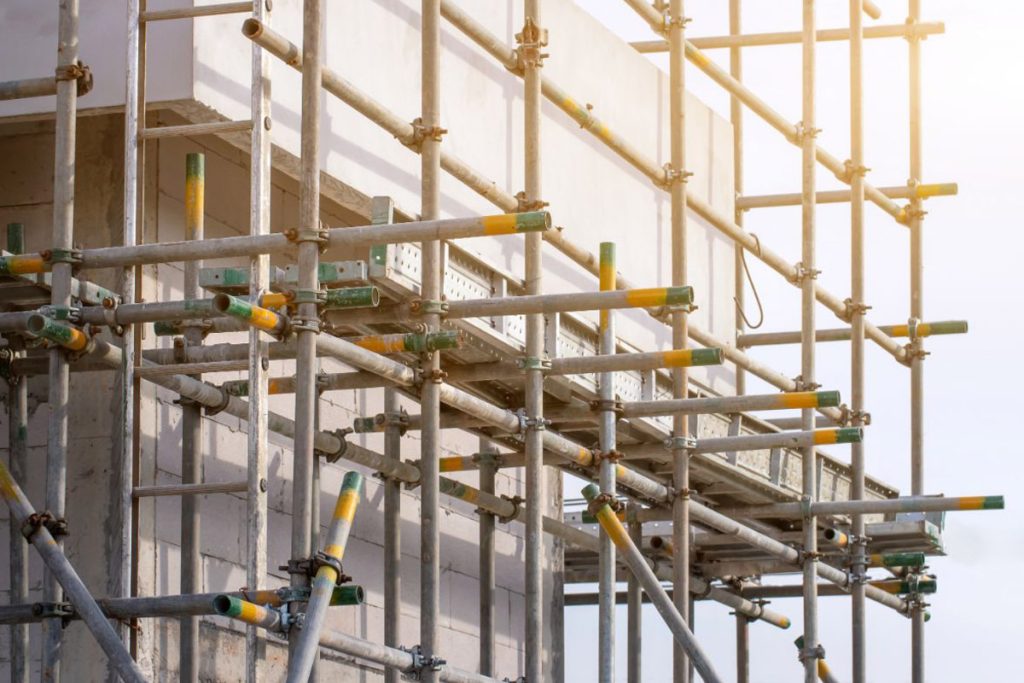There is a surprising range of scaffolding types that can be used in construction and for other purposes. The general principle of a scaffolding construction, whether it is a static, rolling, or any other type of construction, remains the same – to provide a platform for workers and materials while work takes place.
Most often seen in construction projects, scaffolding structures and other constructs can be used for a variety of purposes. It is common to see scaffolding being used for repair work, to access high objects, for window cleaning tall buildings, and more. Choosing the most appropriate form of scaffold structure is an important stage in the project that you are undertaking.
Supported Scaffolding
This is the most commonly used form of scaffolding and is the type that you will see being used in construction work and on most other forms of work where elevation is required. Extra support may be required if the scaffolding will be long or required to take a lot of weight.
Supported scaffolding is built from the base upwards, and will normally be used wherever possible. It is considered the easiest, most convenient, safest, and most cost effective form of scaffolding construct. Different forms of supported scaffolding are available, and each will serve a very specific purpose and used in specific circumstances.
Suspended Scaffolding
Suspended scaffolding is typically suspended from a roof or other tall construct. It is most commonly used when it is not possible to construct a base, or where access to upper levels may be required, and the building of scaffolding from floor to the required level would be impractical.
This type of scaffolding is commonly used by window cleaners on tall buildings, but may also be seen where repairs are needed to the exterior of upper levels of similarly tall buildings. Supported scaffolding is usually preferred where possible.
Rolling Scaffolding
Rolling scaffolding is a similar type of construct to supported scaffolding, but rather than offering a stable base, it uses castor style wheels that enable the base to be moved. This is a useful form of scaffolding when you need to complete work over a longer distance than a single scaffolding construction would permit.
The wheels should be locked when workers or materials are on the scaffolding, in order to ensure the safety of those using it, and those around it.
Mobile Scaffolding
There are a number of factors to consider when deciding whether to use static or mobile scaffolding. Ease of access is one such consideration, along with the amount of movement on the scaffolding itself. Where possible, you should rely on the use of a single scaffolding structure, or a number of structures, because mobile units, while perfectly safe when well-constructed and used properly, do pose more of a hazard than mobile constructs.
Most scaffolding is considered semi-permanent. Once used, it can be taken apart and moved to another location before it is constructed again. Fixed scaffolding can be left in position for longer periods of time, making it especially useful in those situations where permanent access may be needed to elevated positions.
Aerial Lifts
Aerial lifts should be used where workers need to be able to access a number of levels in order to be able to complete a construction. For example, if building work is being completed on the outside of a multi-storey property and both workers and materials will be needed to work outside two or more floors, at different times, then an aerial lift will make it easier and safer to lift even large amounts of material, and multiple workers to the levels required.



